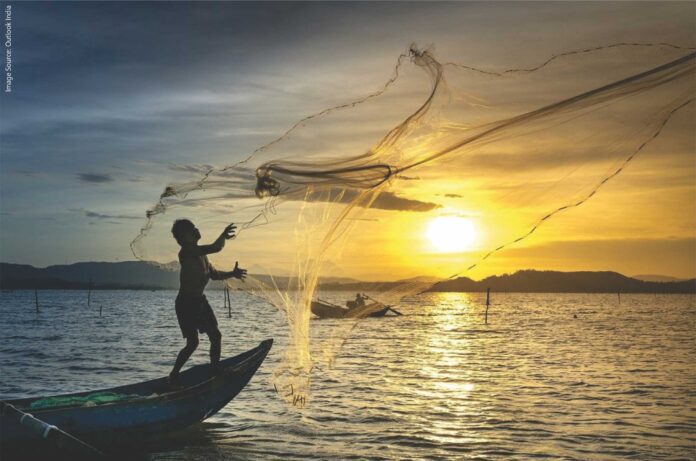

Oversupply and Stagnant Demand:
On one side, there has been an oversupply of shrimp in the global market, and on the other side, the demand has remained subdued due to inflation in the US, Europe, and China, our major markets. Both these factors resulted in lower prices for the farmers. There was, however, little to no difference in prices at the consumer level in the markets, therefore it may be assumed that buyers in the importing countries bargained for lower prices because of oversupply and did not pass their benefits to the consumers.
Mismatch in Imports & Production Figures:
As per available data from various sources, India imported 25% fewer broodstocks compared to the previous year but this reduction is not reflected in the production and export data. Society of Aquaculture Professionals (SAP) in their annual shrimp crop review meeting on January 5, 2024, came up with a preliminary production estimate of 8-9 lakh tonnes in 2023.
Farmers’ Sentiment:
Due to the prevailing negative sentiment, farmers may not stock as they used to and hence there would be a reduced production expected in 2024. Almost all presenters at the Shrimp Crop 2023 Review meeting by SAP opined that the production would be lower by 20-25%. Global production might keep increasing, particularly in South America which is better in genetics, disease management, and scale of production as there are fewer players. However, the recent developments in Ecuador may result in lowered production in that country which is currently the top producer of shrimp in the world and that may change the picture and lead to higher stocking in India.
Unified marketing approach:
With increased production, there is an urgent need for unified marketing efforts. Traditionally, the USA, Europe, and Japan have been the export destinations for Indian shrimp and recently China has become an important destination also. While there has been reduced demand from Japan due to low consumption, it is compensated for by China which is importing more shrimp. The need for combined efforts among the supplying countries is recognized now, thus initiatives are started where seafood export associations from different countries are coming together to create one message for the world market in the hope that it can boost shrimp consumption in all markets.
Developing Domestic Market:
India, with the largest population in the world, has great potential for domestic consumption. However, it needs infrastructure development to fully realize this potential. Industry players and farmers are beginning to see this as an opportunity. Additionally, campaigns to increase consumer awareness are attaining importance among the stakeholders of the shrimp farming sector.
India is no more in isolation:
Marketing strategies that worked 10 years ago for the Indian Shrimp industry are no longer relevant in the present scenario. Today, India is one of the biggest global suppliers of shrimp and hence it needs to be competitive enough to remain in business. Buyers have also become more stringent with respect to certifications, zero tolerance on antibiotic residues, etc. So, compliance requirements are high. The quality of Indian shrimp has improved in the past few years, but this message should reach the world market more effectively.
Fish industry:
India is a major producer of freshwater fish like carp and Pangasius. Pangasius can be cultured in high densities so it is a preferred species for culture all over India. In 2023, the price of Pangasius declined for most of the year and farmers in Andhra Pradesh where Pangasius is widely farmed, lost money. Expanding fish culture in Northern and Eastern India puts pressure on the price of fish in AP which depends on the northern and eastern markets for consumption. However, markets for fish are expanding with the rising demand for processed or ready-to-cook fish, which are largely imported from Vietnam. Indian companies, especially from Andhra Pradesh, are also exploring this segment. Overall, the fish sector is expected to grow in 2024.
New feed mills in North India:
Along with fish sector growth in North & East India, feed manufacturers are also investing in the region. Even some established players from South India might invest in states like Bihar, UP, Orissa, West Bengal, etc. A large project for producing Rainbow Trout is being established in Kashmir and will come into production in 2024.
Crises in fishmeal and fish oil:
Major producing areas of fishmeal and fish oil in South America are highly impacted by El Nino. Hence, there was lesser availability of both ingredients and increased exports from India. The prices of fishmeal went up from USD 1500 to USD 2000 per tonne and fish oil prices went up from USD 2000-2500 to USD 5000 per tonne.
There is no alternative available in the required quality and quantity to replace fishmeal and fish oil. Whether it is insect meal or algal oil, the volume of production is nowhere near the demand, therefore alternatives are constrained.
I feel 2024 is going to be another tough year with various challenges like 2023 but the aquaculture sector is used to meeting challenges well and we will see the same in 2024 too.













